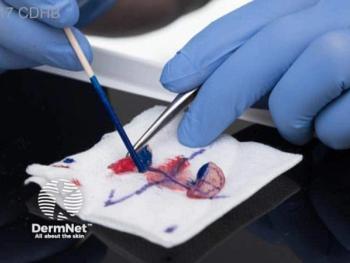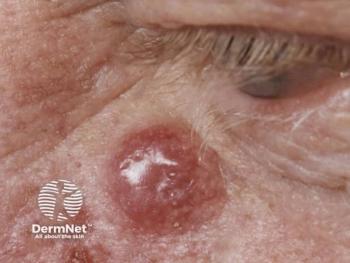
Bacterial Colonization After Mohs Surgery
A poster at the 2022 American College of Mohs Surgery Annual Meeting examined the prevalence of bacterial organism colonization in Mohs wounds left to secondary intention.
Mohs Micrographic Surgery (MMS) can be conducted on several parts of the body, including places that the skin does not have much laxity like the legs. When this surgery is conducted in lower leg area, many times dermatologic surgeons will leave the wounds to heal by second intention, but there is evidence that these wounds are at a higher risk for infection.
A poster at the 2022 American College of Mohs Surgery Annual Meeting being held May 12 to 15, 2022 in Philadelphia, Pennsylvania, investigated the likelihood of this complication, to provide evidence-based research to help guide antibiotic treatment. The findings from a prospective, controlled trial compared the bacteria colonizing in second intention lower leg wounds at a single academic procedural dermatology office.
Lower legs can be particularly hard to make an infection diagnosis, the poster stated, as both pain and erythema surrounding these wounds plus poor circulations and venous congestion make it difficult. This can lead to unnecessary antibiotic treatments. Patients included in the trial had to have undergone MMS for lesions below the knee and were at their 2-week follow-up visit. At this visit, the wounds were swabbed for bacteria and patients were then categorized into infected or control groups based on the evidence of erythema, pain, swelling, and warmth.
These swabs were sent to Cooper University Hospital microbiology lab in Camden, New Jersey, for culture tests and were then recorded by bacteria colonization if any was present. In total, 51 patients were studied between November 2017 and July 2020. Of this number, 15 were infected wounds and 26 were control.
Cultures grew from 11 (21.6%) from normal skin flora alone, 8 (15.7%) from clinically infected wounds, and 3 (5.9%) from control wounds (P= .02). It was found that a higher rate of Coagulase-Negative Staphylococcus (CoNS) and corynebacterium minutissimum colonization for the control group wounds versus the infected wounds (P= .0025 and .00226 respectively).
Staphylococcus aureus (S. aureus) at 25.4% (n=13) was the most common pathogen found in culture. When broken down, 15.7% were in infected wounds and 9.8% in control wounds (P= .73). Of this total, 25.4% or 4 wounds, all from the infected group, were Methicillin-resistant Staphylococcus aureus (MRSA).
The second most common pathogen was pseudomonas aeruginosa in 11 wounds, 6 control, and 5 clinically infected. With this data, no significant correlation were identified between colonizing bacteria and wound location, wound size, stage number, type of cutaneous malignancy, or comorbid conditions, according to investigators.
The authors hypothesized that the increase of CoNS and Corynebacterium minutissimum may provide a protective role for wounds instead of an pathogenic once. More research is needed on the subject to determine true correlation, they wrote.
Reference
Renzi M, Jennings T, Lawrence N, et al. Assessment of bacterial organism colonizing Mohs surgical wound healing by second intention. Presented at: American College of Mohs Surgery Annual Meeting; May 12-15, 2022; Philadelphia, Pennsylvania
Newsletter
Like what you’re reading? Subscribe to Dermatology Times for weekly updates on therapies, innovations, and real-world practice tips.


















